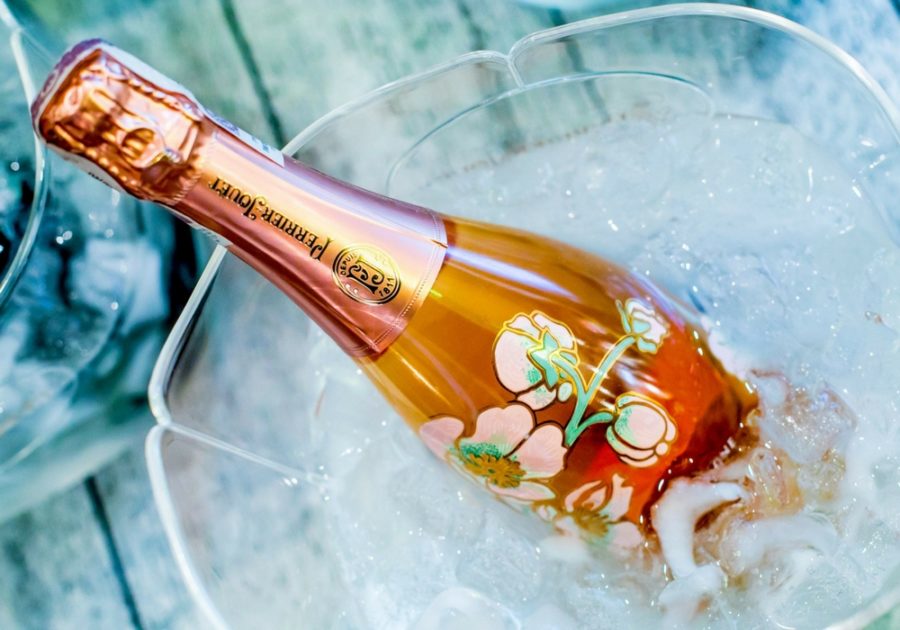THE MOST INTERESTING AND MOST IMPORTANT FACTS ABOUT CHAMPAGNE

Champagne is one of the most popular and also one of the most luxurious drinks in the whole world. Although usually associated with big celebrations of a new year as well as other special occasions, plenty of people also like to enjoy it without a special occasion. Of course not every sparkling wine is champagne – the original kind is not exactly the cheapest, but its high price comes with equally high quality. What else is there to know about this unique drink?
BUBBLES IN CHAMPAGNE ARE CREATED NATURALLY AND NOT ARTIFICIALLY INJECTED INTO IT
One of the most characteristic differences between real champagne and its cheap imitations are the famous bubbles. Most sparkling wines get them from carbon dioxide injected into the finished product. Champagne, on the other hand, is created using a special method called traditional or champagne method. It consists of a double fermentation. The first goes similarly to other types of wines, in vats or oaken barrels. Then wines of different kinds, regions and years are mixed and placed in bottles, where the second stage of fermentation occurs. Over its course, not only alcohol is made but also the specific byproduct – pockets of carbon dioxide.
BOTTLES OF CHAMPAGNE USED TO EXPLODE UNEXPECTEDLY/strong>

What is interesting, although today champagne is considered to be a luxurious drink and has its fans all over the world, in its early days it didn’t enjoy much renown. It was considered to be a poor quality, unattractive type of wine. The situation changed in the 18th century, when a new, better recipe was developed for this type of alcohol. But before it came to pass, champagne used to be called the “devil’s drink” and “cork blower”, as the content of bottles would always ferment, with the amount of bubbles in it steadily growing. It happened sometimes that the gas created this way caused explosions. Quite a few connoisseurs lost their whole wine collections that way, because a single explosion would often trigger another, thus destroying the entire supply of alcohol.
CONTRARY TO STEREOTYPES, CHAMPAGNE IS NOT ONLY MADE IN THE CHAMPAGNE REGION, FRANCE
If we were to ask a random person, they would probably say without hesitation that real champagne comes from Champagne, which is a northeastern region in France. Meanwhile, the areas where the grapevine used to make champagne can be grown form a so-called patchy wine zone and were specified in a 22nd of July 1927 act.
HOW WE OPEN CHAMPAGNE MAKES A DIFFERENCE
Since champagne has a tendency to explode, it is better to follow specific rules when opening it. First of all: this type of wine should be stored horizontally in a fridge (at temperature of 5-9 degrees Celsius). Before we open the bottle, we should make sure it hasn’t been shaken. It is also a bad idea to tug at and pull the cork, as we are bound to spill some of the precious wine that way. We should grab the vessel with our right hand and hold it at angle while grabbing the cork with our left hand. The next step is to gently twist the bottle both ways, which will hold the cork in place. We take it out gently and hold it in place in order to avoid an “explosion”.
CHAMPAGNE GOES WELL WITH NEARLY EVERY DISH
Plenty of people assume that since champagne is such a high-end drink, it should only be served with specific, carefully selected dishes. The reality, however, is that its flavor goes well with a whole lot of different dishes. It can be served, among others, with cheeses, meats, fruits, and even desserts. We’re actually only limited by our own imagination – it’s a good idea to experiment in order to find combinations that we like the best. However, we should remember the rule on serving every other type of alcohol: sweet flavors “like” sweet ones, whereas dry ones go better with dry ones.

A CHAMPAGNE CORK REACHES IMPRESSIVE VELOCITIES!
The pressure inside a champagne bottle is as high as 5 to 6 bars, which is twice as high as in a car tire. For that reason, it is better to restrain oneself from shooting the cork to celebrate special occasions – this type of fun can end really badly. If we shake the bottle before opening it, the cork may be propelled at a speed reaching 50 km/h!
IT IS NOT CLEAR WHO “INVENTED” CHAMPAGNE
There are at least two theories on who developed the recipe for this famous drink. The first one says that the champagne method was Britons’ idea, as they were also the first to manufacture bottles made of thicker glass, which prevents champagne from exploding. Another one says that the traditional method was invented by French Benedictine monk Dom Pierre Pérignon, who is quoted as saying to his brothers after trying the drink he had invented: “Come quick, I’m drinking stars here!”. That’s it when it comes to legends. What we know for sure is that it was him who started carefully selecting the types of grapes in 1670, thus improving the quality of the wine, which had not been considered a very high-end drink prior to that. Another one of his ideas was to use oaken corks, which were attached to bottles using hemp strings soaked in oil, which allowed to keep the champagne fresh.


